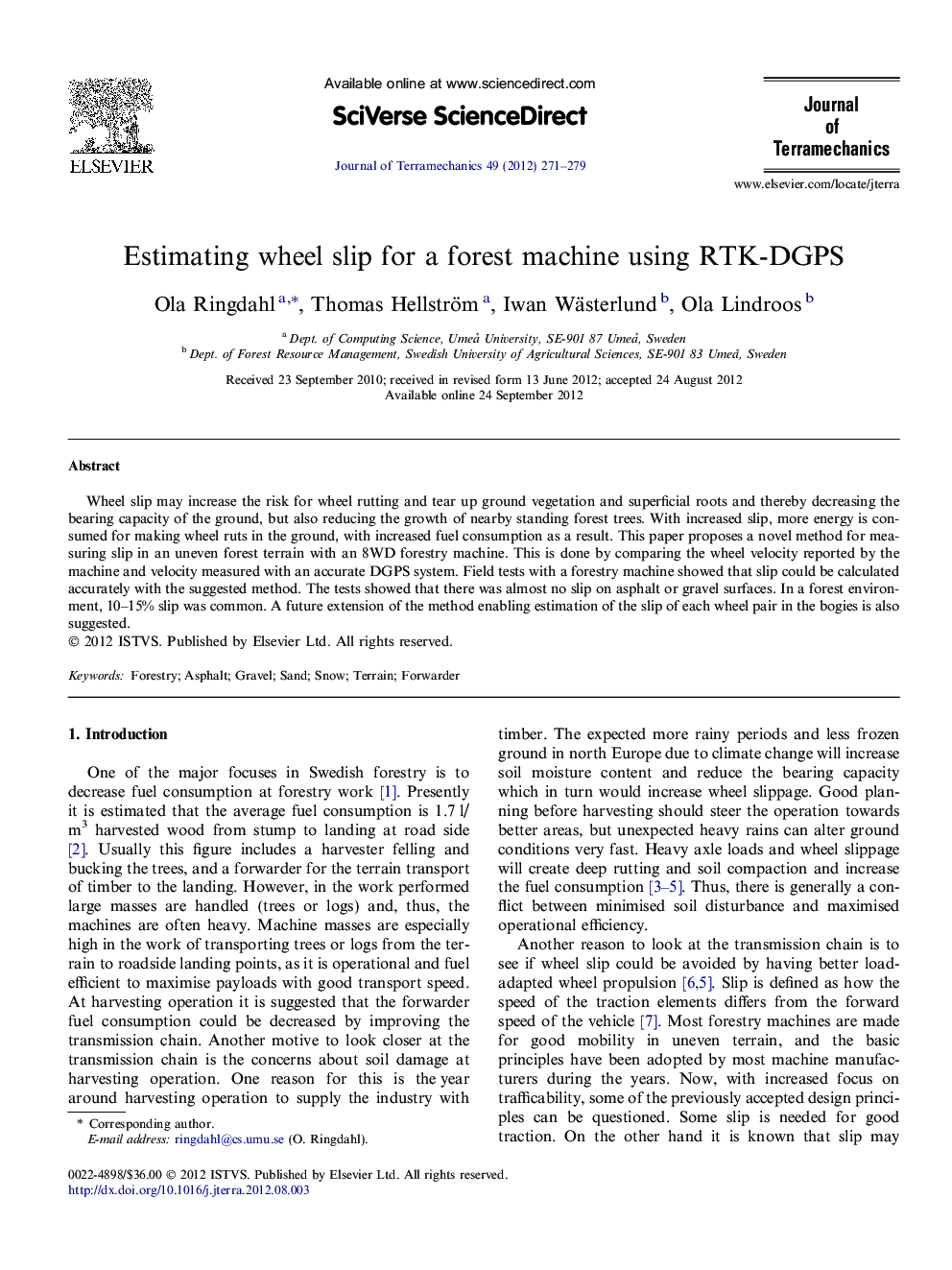| Article ID | Journal | Published Year | Pages | File Type |
|---|---|---|---|---|
| 799952 | Journal of Terramechanics | 2012 | 9 Pages |
Wheel slip may increase the risk for wheel rutting and tear up ground vegetation and superficial roots and thereby decreasing the bearing capacity of the ground, but also reducing the growth of nearby standing forest trees. With increased slip, more energy is consumed for making wheel ruts in the ground, with increased fuel consumption as a result. This paper proposes a novel method for measuring slip in an uneven forest terrain with an 8WD forestry machine. This is done by comparing the wheel velocity reported by the machine and velocity measured with an accurate DGPS system. Field tests with a forestry machine showed that slip could be calculated accurately with the suggested method. The tests showed that there was almost no slip on asphalt or gravel surfaces. In a forest environment, 10–15% slip was common. A future extension of the method enabling estimation of the slip of each wheel pair in the bogies is also suggested.
► Slip for a forwarder is estimated by comparing GPS-based speed with wheel speed. ► In a forest environment, 10–15% slip was common. ► Results can be useful for future improvements of the transmission chain. ► Suggestions for a future slip-detecting setup for individual wheel pairs are given.
